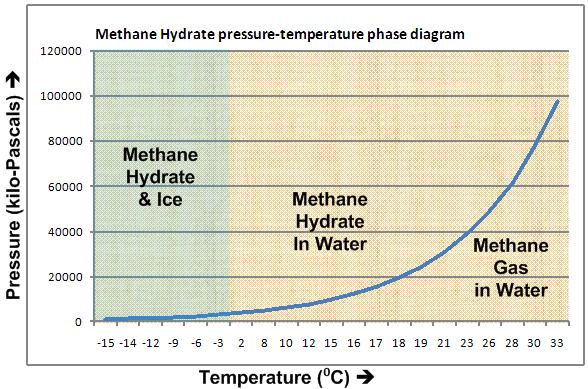Deep ocean warming solves the sea level puzzle
Posted on 18 February 2011 by Ari Jokimäki
Recent sea level rise has so far been difficult to fully explain: satellites measure global sea level rise since 1993 to be about 3.1 mm/year. The warming and expanding 'upper ocean', or the top 700 metres measured by ships and buoys can explain 1.2 mm/year whilst the water added by melting snow and ice can be estimated from satellite gravity measurements for ice sheets and other methods for smaller glaciers, and is about 0.85 mm/year.

Figure 1. Model result for sea level rise from thermal expansion of the deep ocean.
Simple addition of the numbers above (1.2 + 0.85 mm/year = 2.05 mm/year) shows that the result from the upper ocean thermal expansion and addition of water mass is still about 1 mm/year short of the observed 3.1 mm/year sea level rise. However, some previous studies have had these numbers quite close to each other when the uncertainties in the estimates have been considered.
Most of the previous studies and the analysis above are missing one thing – the effect of the deep ocean. Recent studies have shown the global deep ocean to be warming. We have also gained some knowledge of the transmission of the heat to the deep ocean, which can now occur on decadal timescales instead of previously thought centennial timescales. However, temperature measurements of the deep ocean have been very sparse, so it is difficult to estimate the thermal expansion of the deep ocean from them.
Ocean models have been an important tool for estimating sea level rise and ocean heat content, as they use physics to 'fill in' the data between observations. Most models conserve volume which makes thermal expansion to have no effect to the sea level, so they require so-called "Boussinesq correction" in order to estimate sea level rise from the thermal expansion of the sea water. The correction is globally uniform so the regional estimates might not be correct even if the global estimate would be good.
A new study by Song & Colberg has aimed to improve the estimates of the sea level rise. They used the sea level satellite measurements from TOPEX/Poseidon, Jason-1, ERS-1 and EVISAT. They also used gravity measurements from GRACE to determine the addition of melt-water. Thermal expansion of the upper ocean was determined from the CTD, XBT and Argo measurements. They also used a non-boussinesq ocean model to simulate the sea level budget.
The annual variability is very similar in the estimates of upper ocean thermal expansion and the measurements of the sea level rise. This suggests that the annual variability in sea level rise is originating from the thermal expansion and contraction of the upper ocean with annually varying temperatures. Also the model simulations show similar annual variability. The regional trends are remarkably different in all three data sets. This indicates that there is something missing from the sea level budget.
The model simulations generally agree with the observations rather well with some minor differences here and there. The model simulations also show the deep ocean thermal expansion. There is a long-term expanding trend. This suggests that there should be warming in the deep ocean. Model results show that especially North Atlantic and Antarctic Circumpolar Current deep waters should be warming and that the warming is related to the ocean circulation.

Figure 2. Comparison of model results and observations.
This deep ocean warming might be the reason why the sea level budget does not close. To gain a further confidence to the situation, the model results were compared to the available deep ocean measurements. The result from this comparison is a general match, even if some minor regional differences between the model results and the observations exist. The model results also show that the deep ocean warming is strongest in the Southern Ocean, which matches the results of the recent study by Purkey & Johnson.
The model simulations give a sea level rise of 1.1 mm/year from the thermal expansion of the deep ocean. When that is added to the 2.05 mm/year calculated above, the result (3.15 mm/year) is remarkably close to the observed rise of 3.1 mm/year (which more accurately is 3.11 mm/year).
Here it is important to note that most (82%) of the volume of the global ocean lies deeper than 700 meters from the surface. Therefore even slight warming in the deep ocean causes a large rise in sea level. Observations show that the upper parts of oceans have warmed for decades, which is sufficiently long time for the warming to show up in the deep ocean as well.
Reference: Song, Y. T., and F. Colberg (2011), Deep ocean warming assessed from altimeters, Gravity Recovery and Climate Experiment, in situ measurements, and a non-Boussinesq ocean general circulation model, J. Geophys. Res., VOL. 116, C02020, 16 PP., 2011, doi:10.1029/2010JC006601.
See also this Skeptical Science article on the recent study by Purkey & Johnson: Billions of Blow Dryers: Some Missing Heat Returns to Haunt Us. Here's also Ari Jokimäki's article on Purkey & Johnson.
This post was translated into English by Ari Jokimäki who wrote the original Finnish version.































 Arguments
Arguments























 0
0  0
0 See this thread for additional discussion.
"methane has risen 140% at the same time carbon dioxide has risen 26% "
Atmospheric methane concentrations are typically measured in parts per billion; CO2 in ppm.
See this thread for additional discussion.
"methane has risen 140% at the same time carbon dioxide has risen 26% "
Atmospheric methane concentrations are typically measured in parts per billion; CO2 in ppm.







Comments